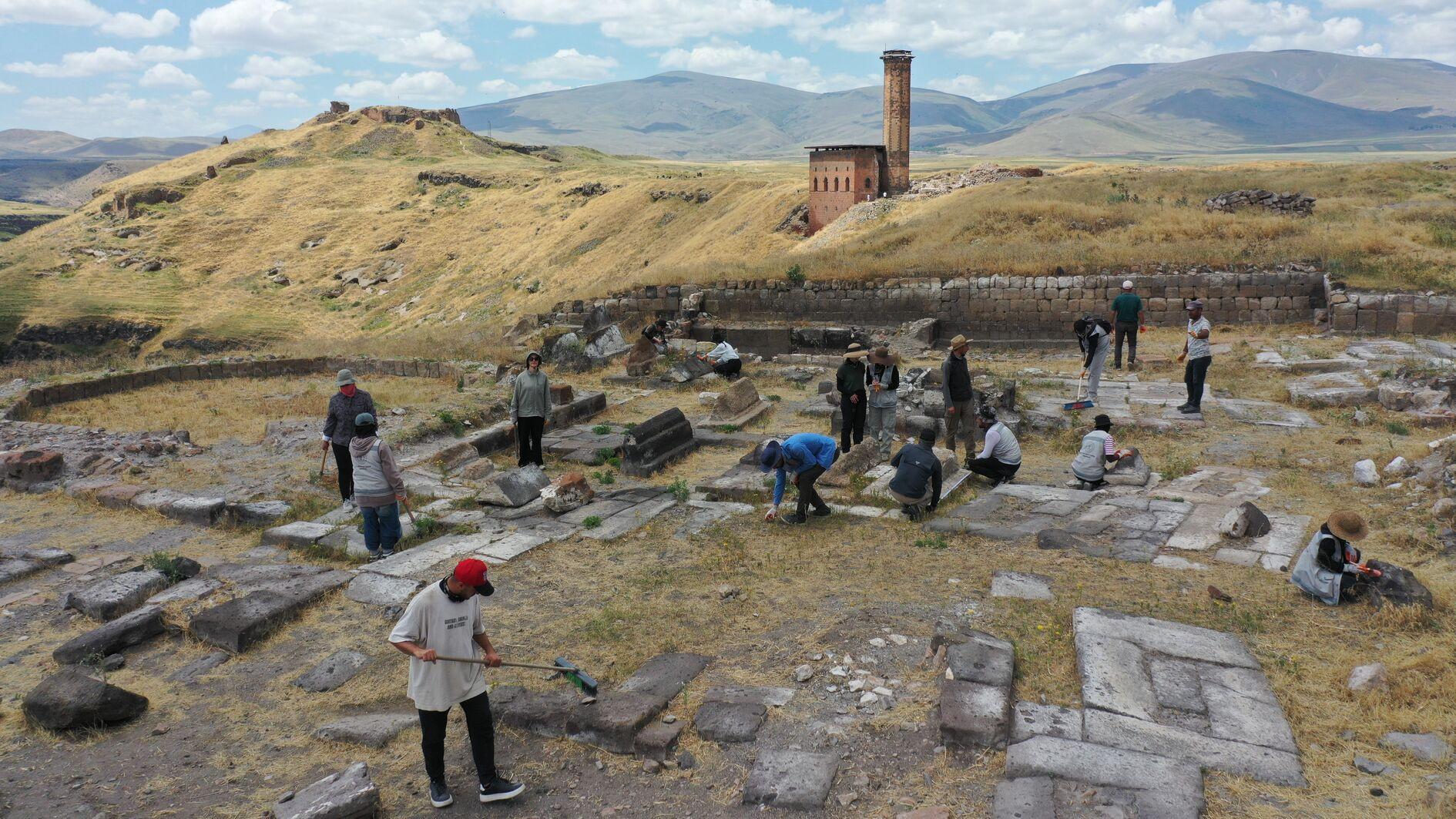
Excavations are being carried out at six locations in the Ani Ruins, a UNESCO World Heritage site in the eastern province of Kars, to unearth both immovable and movable historical artifacts buried beneath the soil.
Located at a historical crossroads between Central Asia and Anatolia as well as the Caucasus and the Middle East, Ani is home to 11th- and 12th-century examples of Turkish-Islamic architecture. The ancient city once hosted a multicultural population of Christians and Muslims and was ruled by various civilizations, including the Bagratid dynasty, Byzantines, Seljuks, Georgians, Mongols, Ilkhanids, Karakoyunlus, Akkoyunlus and Ottomans.
This year's excavation works, carried out in cooperation with the Ministry of Culture and Tourism and Kafkas University, involve a team of 130 experts, including art historians, archaeologists, architects and conservation specialists.
Ani Excavation Director Associate Professor Muhammet Arslan told the state-run Anadolu Agency that this year's season began in April and will continue until Dec. 31.
He said excavation, preservation and landscaping works are taking place simultaneously across six distinct zones, including a significant area known as the “Seljuk Residences,” located west of the Ebu’l Menuçehr Mosque, known as the first mosque built by Turks in Anatolia.
“We believe a large residential neighborhood once existed here, and we’ve been excavating the area since 2019. This year, we’re continuing to reveal well-preserved examples of Seljuk-era civil architecture,” Arslan said.
Excavations are also ongoing at the Seljuk Bazaar in two stages. “We believe the long axis stretching from the Lion Gate to Ani’s Grand Mosque was dedicated to commerce,” Arslan noted. “So far, we've uncovered Seljuk-era workshops and shops along this stretch.”
Another key site is the Seljuk Cemetery, which was first excavated in 2021. Located about 30 meters southwest of the Fethiye Mosque, it is regarded as the earliest Turkish-Islamic cemetery in Anatolia. Findings include an octagonal mausoleum base and tombs of various types, including sarcophagus-style and “akıt” graves.
Arslan emphasized the importance of conservation efforts alongside the excavations. “We’re preserving architectural remnants unearthed during digs so they can be passed down to future generations in a stable condition. Our team is also restoring movable artifacts such as stone, terracotta, glass and bone fragments in the laboratory. Select items are sent to the Kars Museum for display,” he said.
Environmental improvements are also underway. “We’re building inner-city walking paths within the site using natural stones and timber sleepers. By the end of the season, we hope to complete a 5.5-kilometer route that will allow visitors to explore Ani in greater comfort and safety,” he added.